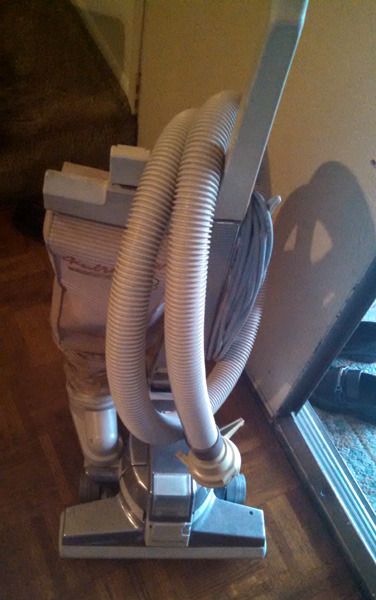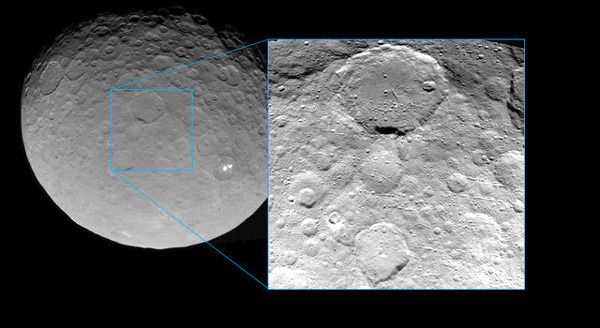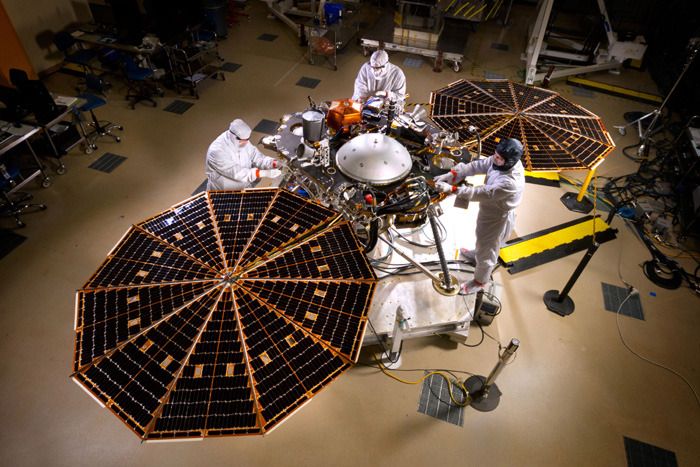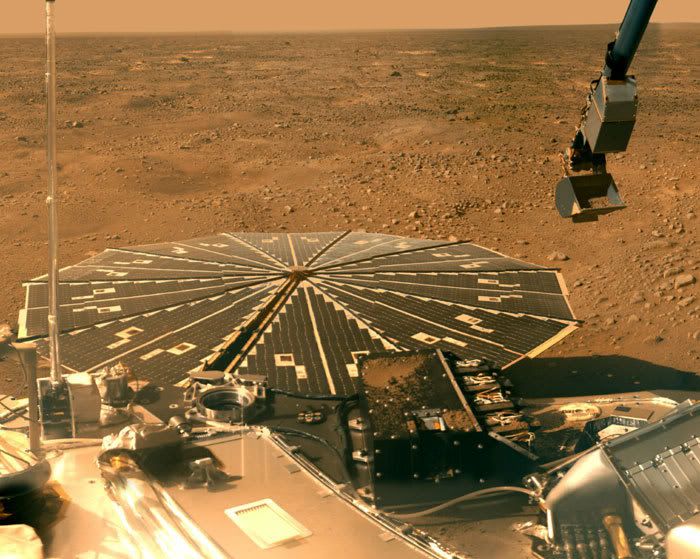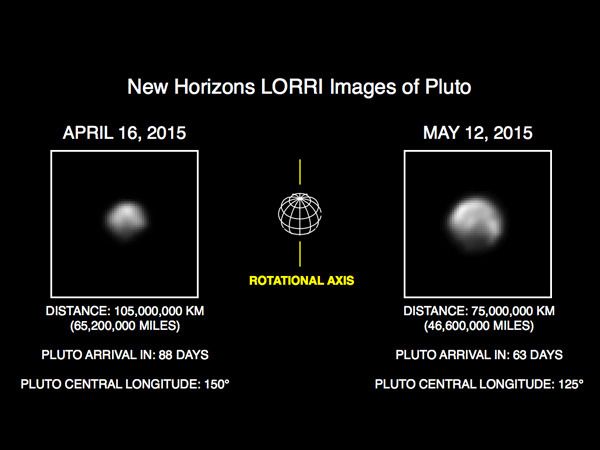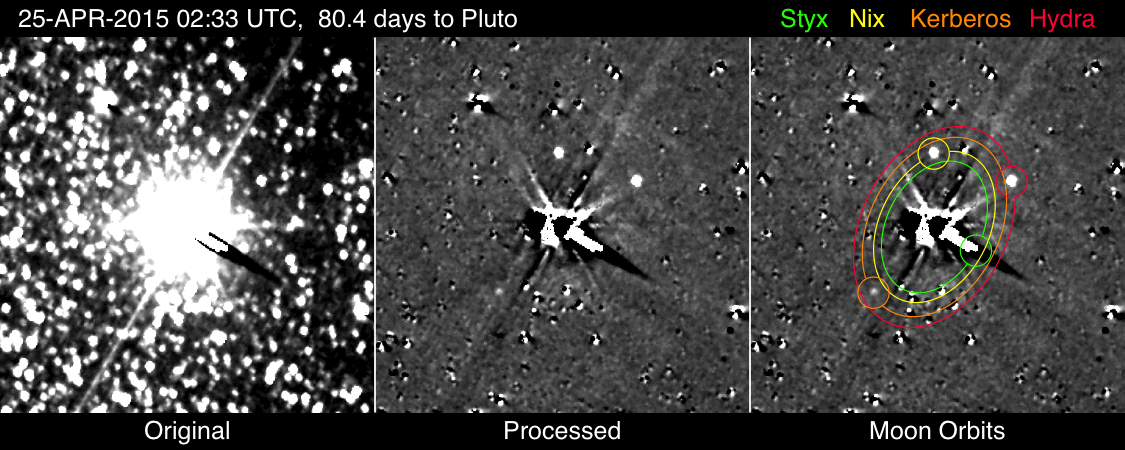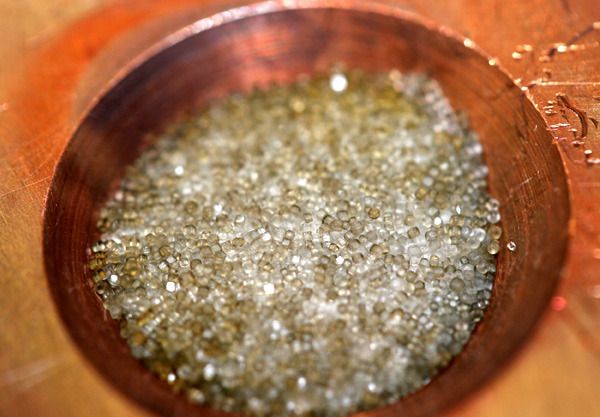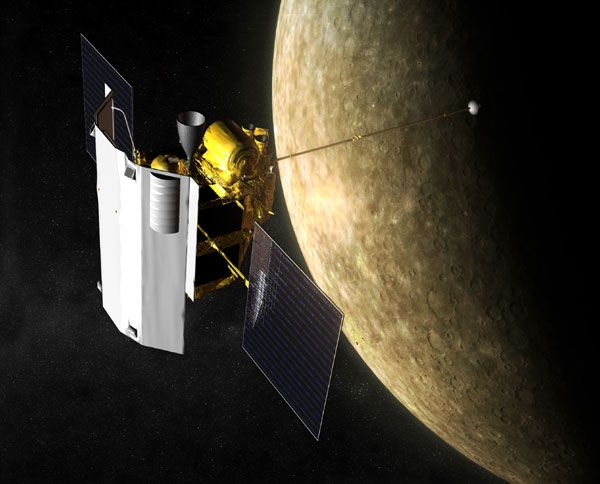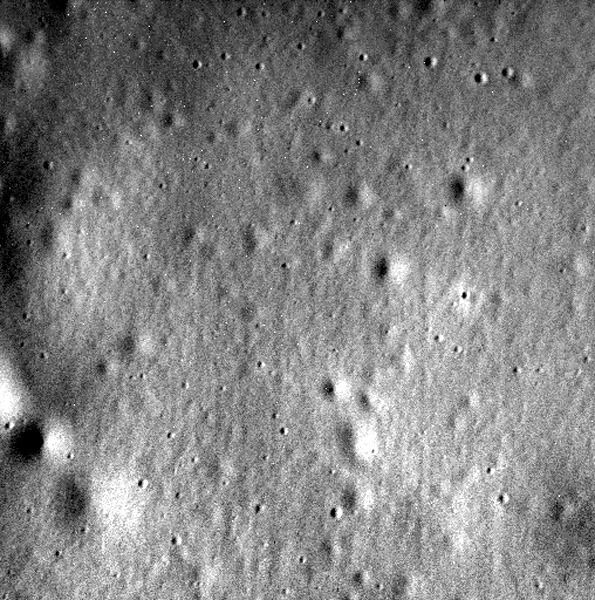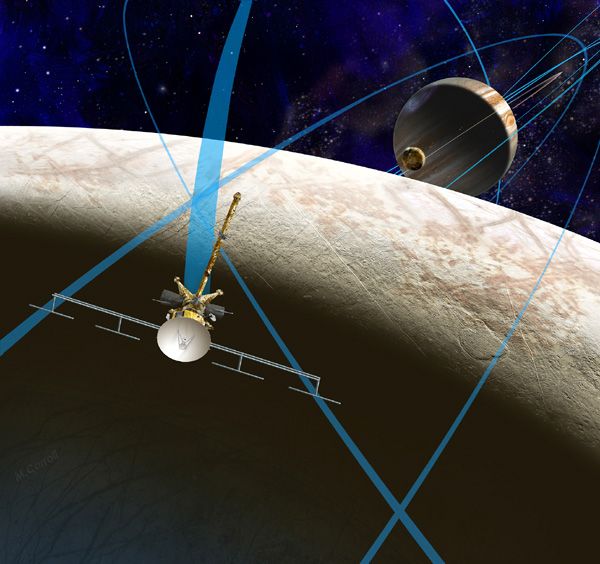 NASA / JPL - Caltech
NASA’s Europa Mission Begins with Selection of Science Instruments (Press Release)
NASA / JPL - Caltech
NASA’s Europa Mission Begins with Selection of Science Instruments (Press Release)
NASA has selected nine science instruments for a mission to Jupiter’s moon Europa, to investigate whether the mysterious icy moon could harbor conditions suitable for life.
NASA’s
Galileo mission yielded strong evidence that Europa, about the size of Earth’s moon, has an ocean beneath a frozen crust of unknown thickness. If proven to exist, this global ocean could have more than twice as much water as Earth. With abundant salt water, a rocky sea floor, and the energy and chemistry provided by tidal heating, Europa could be the best place in the solar system to look for present day life beyond our home planet.
“Europa has tantalized us with its enigmatic icy surface and evidence of a vast ocean, following the amazing data from 11 flybys of the Galileo spacecraft over a decade ago and recent
Hubble observations suggesting plumes of water shooting out from the moon," said John Grunsfeld, associate administrator for NASA’s Science Mission Directorate in Washington. “We’re excited about the potential of this new mission and these instruments to unravel the mysteries of Europa in our quest to find evidence of life beyond Earth.”
NASA’s fiscal year 2016 budget request includes $30 million to formulate a mission to Europa. The mission would send a solar-powered spacecraft into a long, looping orbit around the gas giant Jupiter to perform repeated close flybys of Europa over a three-year period. In total, the mission would perform 45 flybys at altitudes ranging from 16 miles to 1,700 miles
(25 kilometers to 2,700 kilometers).
The payload of selected science instruments includes cameras and spectrometers to produce high-resolution images of Europa’s surface and determine its composition. An ice penetrating radar will determine the thickness of the moon’s icy shell and search for subsurface lakes similar to those beneath Antarctica. The mission also will carry a magnetometer to measure strength and direction of the moon’s magnetic field, which will allow scientists to determine the depth and salinity of its ocean.
A thermal instrument will scour Europa’s frozen surface in search of recent eruptions of warmer water, while additional instruments will search for evidence of water and tiny particles in the moon’s thin atmosphere. NASA’s Hubble Space Telescope observed water vapor above the south polar region of Europa in 2012, providing the first strong evidence of water plumes. If the plumes’ existence is confirmed – and they’re linked to a subsurface ocean – it will help scientists investigate the chemical makeup of Europa's potentially habitable environment while minimizing the need to drill through layers of ice.
Last year, NASA invited researchers to submit proposals for instruments to study Europa. Thirty-three were reviewed and, of those, nine were selected for a mission that will launch in the 2020s.
“This is a giant step in our search for oases that could support life in our own celestial backyard,” said Curt Niebur, Europa program scientist at NASA Headquarters in Washington. “We’re confident that this versatile set of science instruments will produce exciting discoveries on a much-anticipated mission.”
The NASA selectees are:
Plasma Instrument for Magnetic Sounding (PIMS) -- principal investigator Dr. Joseph Westlake of Johns Hopkins Applied Physics Laboratory
(APL), Laurel, Maryland. This instrument works in conjunction with a magnetometer and is key to determining Europa's ice shell thickness, ocean depth, and salinity by correcting the magnetic induction signal for plasma currents around Europa.
Interior Characterization of Europa using Magnetometry (ICEMAG) -- principal investigator Dr. Carol Raymond of NASA’s Jet Propulsion Laboratory
(JPL), Pasadena, California. This magnetometer will measure the magnetic field near Europa and – in conjunction with the PIMS instrument – infer the location, thickness and salinity of Europa’s subsurface ocean using multi-frequency electromagnetic sounding.
Mapping Imaging Spectrometer for Europa (MISE) -- principal investigator Dr. Diana Blaney of JPL. This instrument will probe the composition of Europa, identifying and mapping the distributions of organics, salts, acid hydrates, water ice phases, and other materials to determine the habitability of Europa’s ocean.
Europa Imaging System (EIS) -- principal investigator Dr. Elizabeth Turtle of APL. The wide and narrow angle cameras on this instrument will map most of Europa at 50 meter
(164 foot) resolution, and will provide images of areas of Europa’s surface at up to 100 times higher resolution.
Radar for Europa Assessment and Sounding: Ocean to Near-surface (REASON) -- principal investigator Dr. Donald Blankenship of the University of Texas, Austin. This dual-frequency ice penetrating radar instrument is designed to characterize and sound Europa's icy crust from the near-surface to the ocean, revealing the hidden structure of Europa’s ice shell and potential water within.
Europa Thermal Emission Imaging System (E-THEMIS) -- principal investigator Dr. Philip Christensen of Arizona State University, Tempe. This “heat detector” will provide high spatial resolution, multi-spectral thermal imaging of Europa to help detect active sites, such as potential vents erupting plumes of water into space.
MAss SPectrometer for Planetary EXploration/Europa (MASPEX) -- principal investigator Dr. Jack
(Hunter) Waite of the Southwest Research Institute
(SwRI), San Antonio. This instrument will determine the composition of the surface and subsurface ocean by measuring Europa’s extremely tenuous atmosphere and any surface material ejected into space.
Ultraviolet Spectrograph/Europa (UVS) -- principal investigator Dr. Kurt Retherford of SwRI. This instrument will adopt the same technique used by the Hubble Space Telescope to detect the likely presence of water plumes erupting from Europa’s surface. UVS will be able to detect small plumes and will provide valuable data about the composition and dynamics of the moon’s rarefied atmosphere.
SUrface Dust Mass Analyzer (SUDA) -- principal investigator Dr. Sascha Kempf of the University of Colorado, Boulder. This instrument will measure the composition of small, solid particles ejected from Europa, providing the opportunity to directly sample the surface and potential plumes on low-altitude flybys.
Separate from the selectees listed above, the
SPace Environmental and Composition Investigation near the Europan Surface (SPECIES) instrument has been chosen for further technology development. Led by principal investigator Dr. Mehdi Benna at NASA’s Goddard Space Flight Center in Greenbelt, Maryland, this combined neutral mass spectrometer and gas chromatograph will be developed for other mission opportunities.
NASA's Science Mission Directorate in Washington conducts a wide variety of research and scientific exploration programs for Earth studies, space weather, the solar system and the universe.
Source: NASA.Gov
